I designed a network for a text classification problem. To do this, I'm using huggingface transformet's BERT model with a linear layer above that for fine-tuning. My problem is that the loss on the training set is decreasing which is fine, but when it comes to do the evaluation after each epoch on the development set, the loss is increasing with epochs. I'm posting my code to investigate if there's something wrong with it.
for epoch in range(1, args.epochs + 1):
total_train_loss = 0
trainer.set_train()
for step, batch in enumerate(train_dataloader):
loss = trainer.step(batch)
total_train_loss += loss
avg_train_loss = total_train_loss / len(train_dataloader)
logger.info(('Training loss for epoch %d/%d: %4.2f') % (epoch, args.epochs, avg_train_loss))
print("\n-------------------------------")
logger.info('Start validation ...')
trainer.set_eval()
y_hat = list()
y = list()
total_dev_loss = 0
for step, batch_val in enumerate(dev_dataloader):
true_labels_ids, predicted_labels_ids, loss = trainer.validate(batch_val)
total_dev_loss += loss
y.extend(true_labels_ids)
y_hat.extend(predicted_labels_ids)
avg_dev_loss = total_dev_loss / len(dev_dataloader)
print(("\n-Total dev loss: %4.2f on epoch %d/%d\n") % (avg_dev_loss, epoch, args.epochs))
print("Training terminated!")
Following is the trainer file, which I use for doing a forward pass on a given batch and then backpropagate accordingly.
class Trainer(object):
def __init__(self, args, model, device, data_points, is_test=False, train_stats=None):
self.args = args
self.model = model
self.device = device
self.loss = nn.CrossEntropyLoss(reduction='none')
if is_test:
# Should load the model from checkpoint
self.model.eval()
self.model.load_state_dict(torch.load(args.saved_model))
logger.info('Loaded saved model from %s' % args.saved_model)
else:
self.model.train()
self.optim = AdamW(model.parameters(), lr=2e-5, eps=1e-8)
total_steps = data_points * self.args.epochs
self.scheduler = get_linear_schedule_with_warmup(self.optim, num_warmup_steps=0,
num_training_steps=total_steps)
def step(self, batch):
batch = tuple(t.to(self.device) for t in batch)
batch_input_ids, batch_input_masks, batch_labels = batch
self.model.zero_grad()
outputs = self.model(batch_input_ids,
attention_mask=batch_input_masks,
labels=batch_labels)
loss = self.loss(outputs, batch_labels)
loss = loss.sum()
(loss / loss.numel()).backward()
torch.nn.utils.clip_grad_norm_(self.model.parameters(), 1.0)
self.optim.step()
self.scheduler.step()
return loss
def validate(self, batch):
batch = tuple(t.to(self.device) for t in batch)
batch_input_ids, batch_input_masks, batch_labels = batch
with torch.no_grad():
model_output = self.model(batch_input_ids,
attention_mask=batch_input_masks,
labels=batch_labels)
predicted_label_ids = self._predict(model_output)
label_ids = batch_labels.to('cpu').numpy()
loss = self.loss(model_output, batch_labels)
loss = loss.sum()
return label_ids, predicted_label_ids, loss
def _predict(self, logits):
return np.argmax(logits.to('cpu').numpy(), axis=1)
Finally, the following is my model (i.e., Classifier) class:
import torch.nn as nn
from transformers import BertModel
class Classifier(nn.Module):
def __init__(self, args, is_eval=False):
super(Classifier, self).__init__()
self.bert_model = BertModel.from_pretrained(
args.init_checkpoint,
output_attentions=False,
output_hidden_states=True,
)
self.is_eval_mode = is_eval
self.linear = nn.Linear(768, 2) # binary classification
def switch_state(self):
self.is_eval_mode = not self.is_eval_mode
def forward(self, input_ids, attention_mask=None, labels=None):
bert_outputs = self.bert_model(input_ids,
token_type_ids=None,
attention_mask=attention_mask)
# Should give the logits to the the linear layer
model_output = self.linear(bert_outputs[1])
return model_output
For visualization the loss throughout the epochs:
